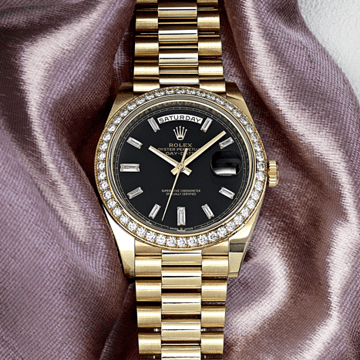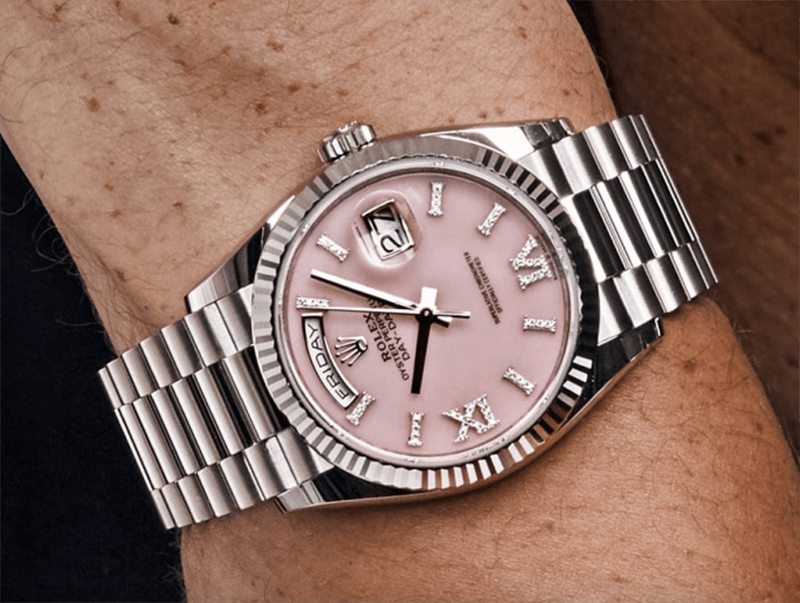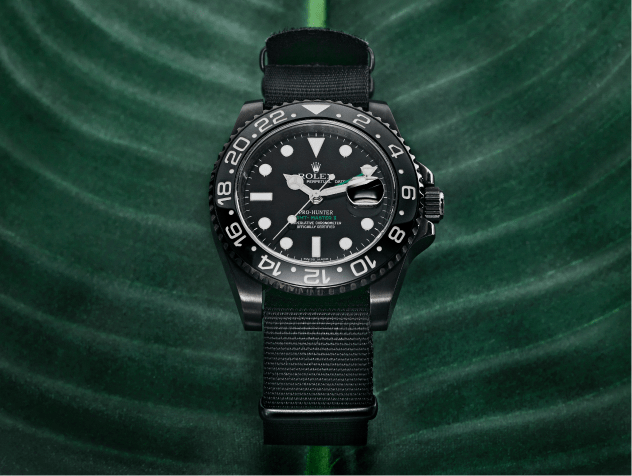Rolex Explorer
Rolex Explorer – Built for Adventure
The Rolex Explorer is the ultimate companion for those who seek adventure and thrive in the great outdoors. First introduced in 1953 to celebrate Sir Edmund Hillary and Tenzing Norgay’s historic ascent of Mount Everest, the Explorer combines rugged durability with timeless design. Its clean aesthetic and unparalleled reliability make it a favorite for explorers, mountaineers, and collectors alike.
Designed to perform in extreme conditions, the Explorer embodies Rolex’s commitment to precision, functionality, and understated elegance.
Explore the Most Popular Explorer Models
Explorer 36mm in Steel (Ref. 124270)
The 124270 returns to the classic 36mm size, paying homage to the original Explorer. Featuring a stainless steel case, black lacquered dial, and luminous hour markers, it offers timeless versatility.
Explorer 40mm in Steel (Ref. 224270)
The 224270 introduces a larger 40mm case while maintaining the Explorer’s signature simplicity. Crafted in Oystersteel with Chromalight display, it’s perfect for modern collectors who prefer a larger wrist presence.
Explorer Two-Tone (Ref. 124273)
The 124273 blends stainless steel and 18k yellow gold for a luxurious yet sporty look. With a black dial and classic 36mm case, this model offers a contemporary twist on the Explorer’s rugged heritage.
Explorer II with White Dial (Ref. 226570)
Known as the "Polar Explorer," the 226570 features a 42mm case, a highly legible white dial, and an orange 24-hour hand. Designed for spelunkers and adventurers, it includes a fixed bezel with 24-hour markers for tracking dual time zones.
Explorer II with Black Dial (Ref. 226570)
This black-dial version of the Explorer II offers the same 42mm case and robust design as its white-dial counterpart, providing an understated yet bold aesthetic.
At Wrist Aficionado, we proudly offer a curated selection of Rolex Explorer watches, from the iconic 36mm Explorer to the bold Explorer II. These timepieces are built to endure extreme conditions while maintaining timeless elegance. Explore our collection today and find your perfect adventure companion.
About Rolex Explorer
Rolex Explorer – Built for Adventure
The Rolex Explorer is the ultimate companion for those who seek adventure and thrive in the great outdoors. First introduced in 1953 to celebrate Sir Edmund Hillary and Tenzing Norgay’s historic ascent of Mount Everest, the Explorer combines rugged durability with timeless design. Its clean aesthetic and unparalleled reliability make it a favorite for explorers, mountaineers, and collectors alike.
Designed to perform in extreme conditions, the Explorer embodies Rolex’s commitment to precision, functionality, and understated elegance.
Explore the Most Popular Explorer Models
Explorer 36mm in Steel (Ref. 124270)
The 124270 returns to the classic 36mm size, paying homage to the original Explorer. Featuring a stainless steel case, black lacquered dial, and luminous hour markers, it offers timeless versatility.
Explorer 40mm in Steel (Ref. 224270)
The 224270 introduces a larger 40mm case while maintaining the Explorer’s signature simplicity. Crafted in Oystersteel with Chromalight display, it’s perfect for modern collectors who prefer a larger wrist presence.
Explorer Two-Tone (Ref. 124273)
The 124273 blends stainless steel and 18k yellow gold for a luxurious yet sporty look. With a black dial and classic 36mm case, this model offers a contemporary twist on the Explorer’s rugged heritage.
Explorer II with White Dial (Ref. 226570)
Known as the "Polar Explorer," the 226570 features a 42mm case, a highly legible white dial, and an orange 24-hour hand. Designed for spelunkers and adventurers, it includes a fixed bezel with 24-hour markers for tracking dual time zones.
Explorer II with Black Dial (Ref. 226570)
This black-dial version of the Explorer II offers the same 42mm case and robust design as its white-dial counterpart, providing an understated yet bold aesthetic.
At Wrist Aficionado, we proudly offer a curated selection of Rolex Explorer watches, from the iconic 36mm Explorer to the bold Explorer II. These timepieces are built to endure extreme conditions while maintaining timeless elegance. Explore our collection today and find your perfect adventure companion.












